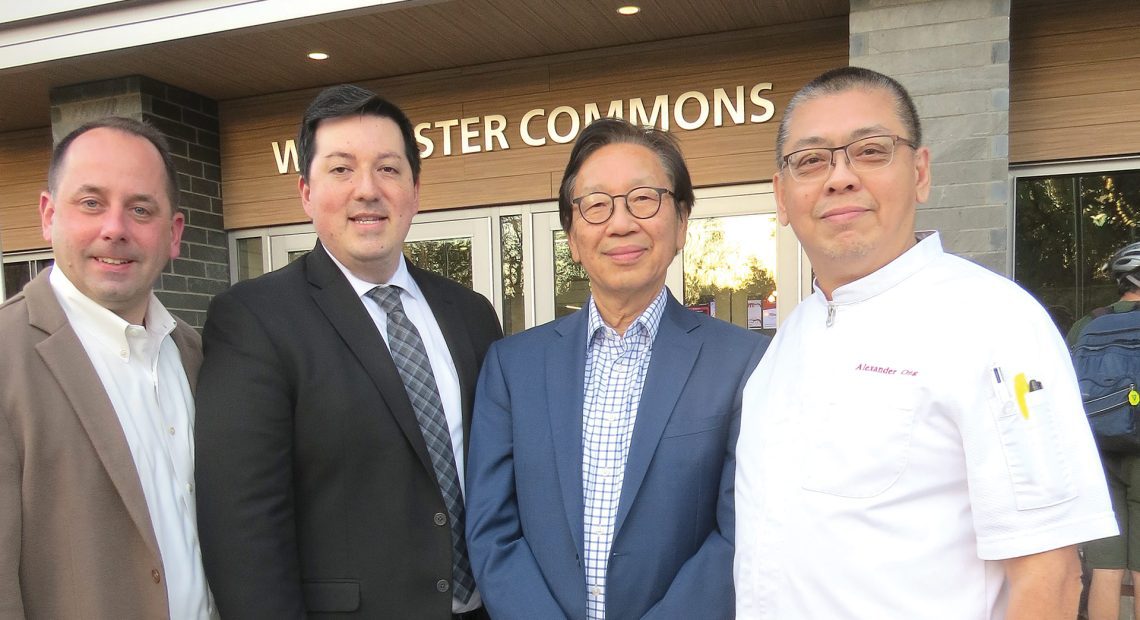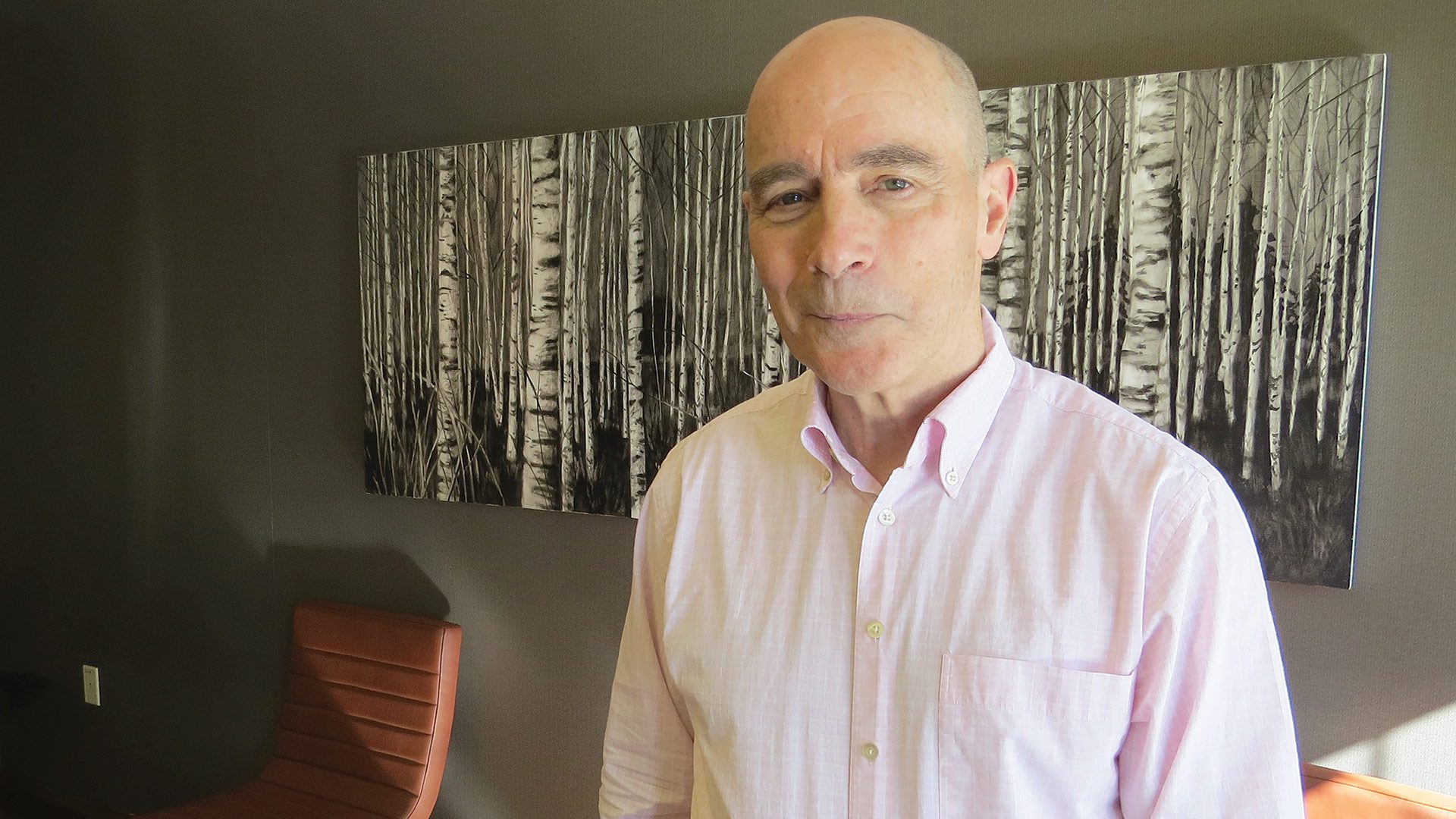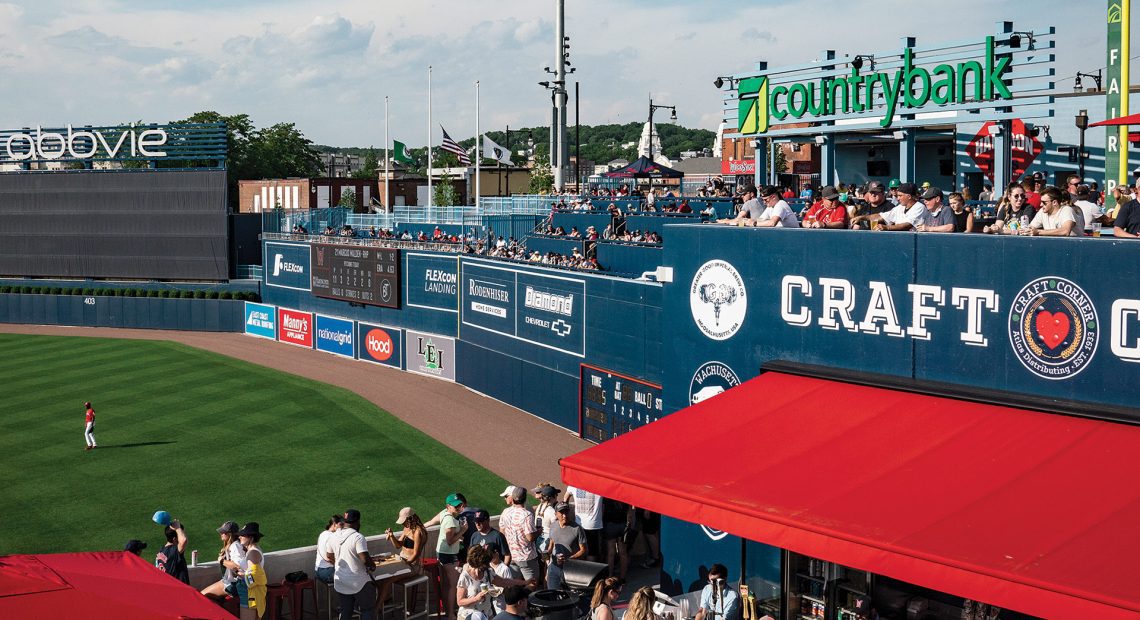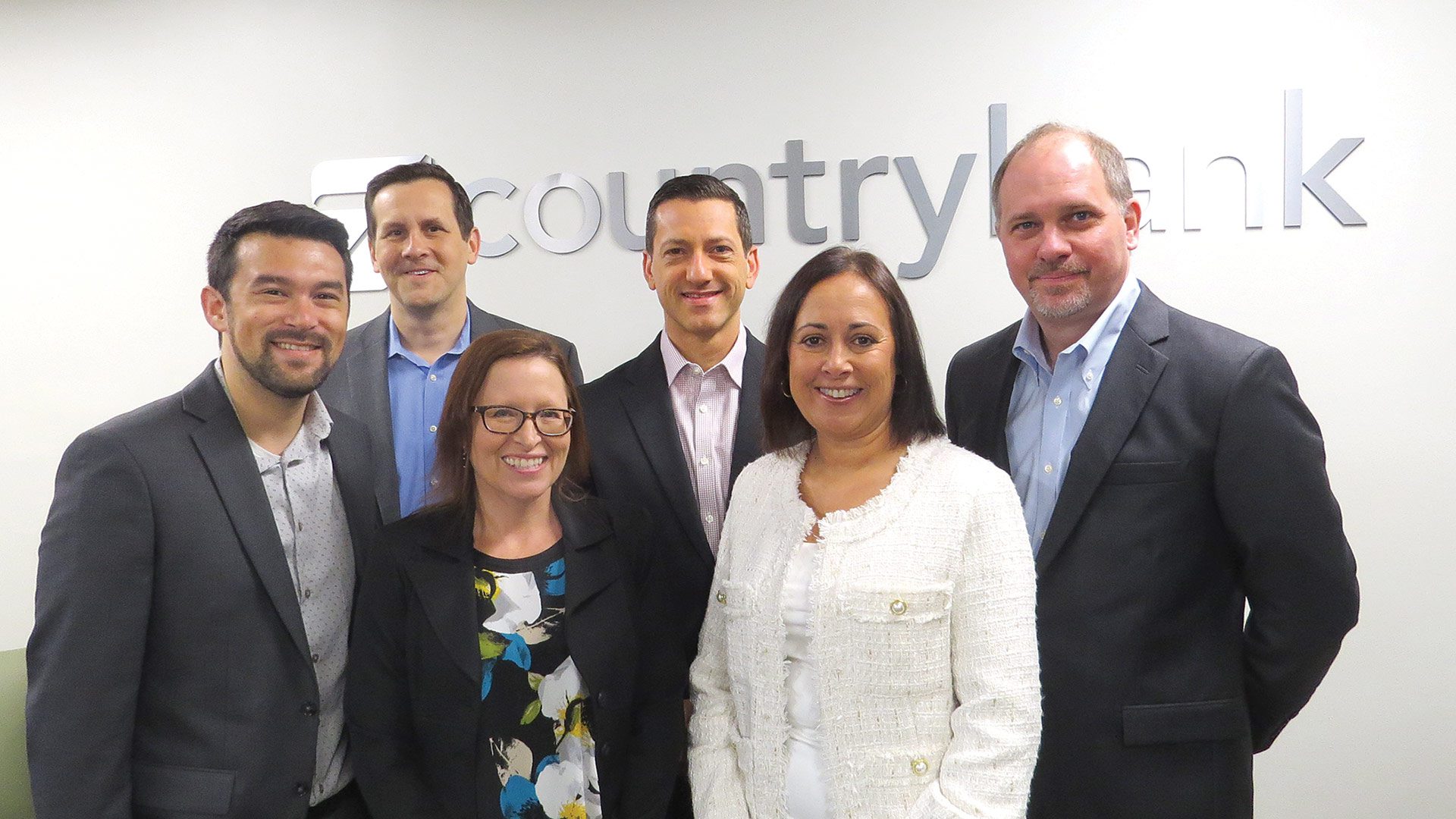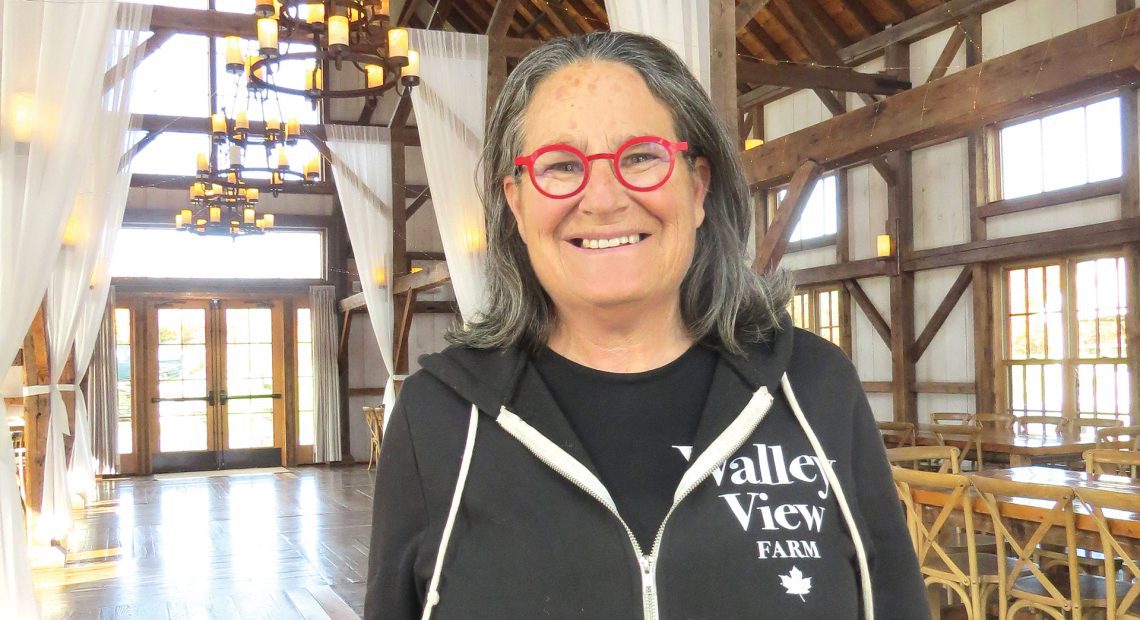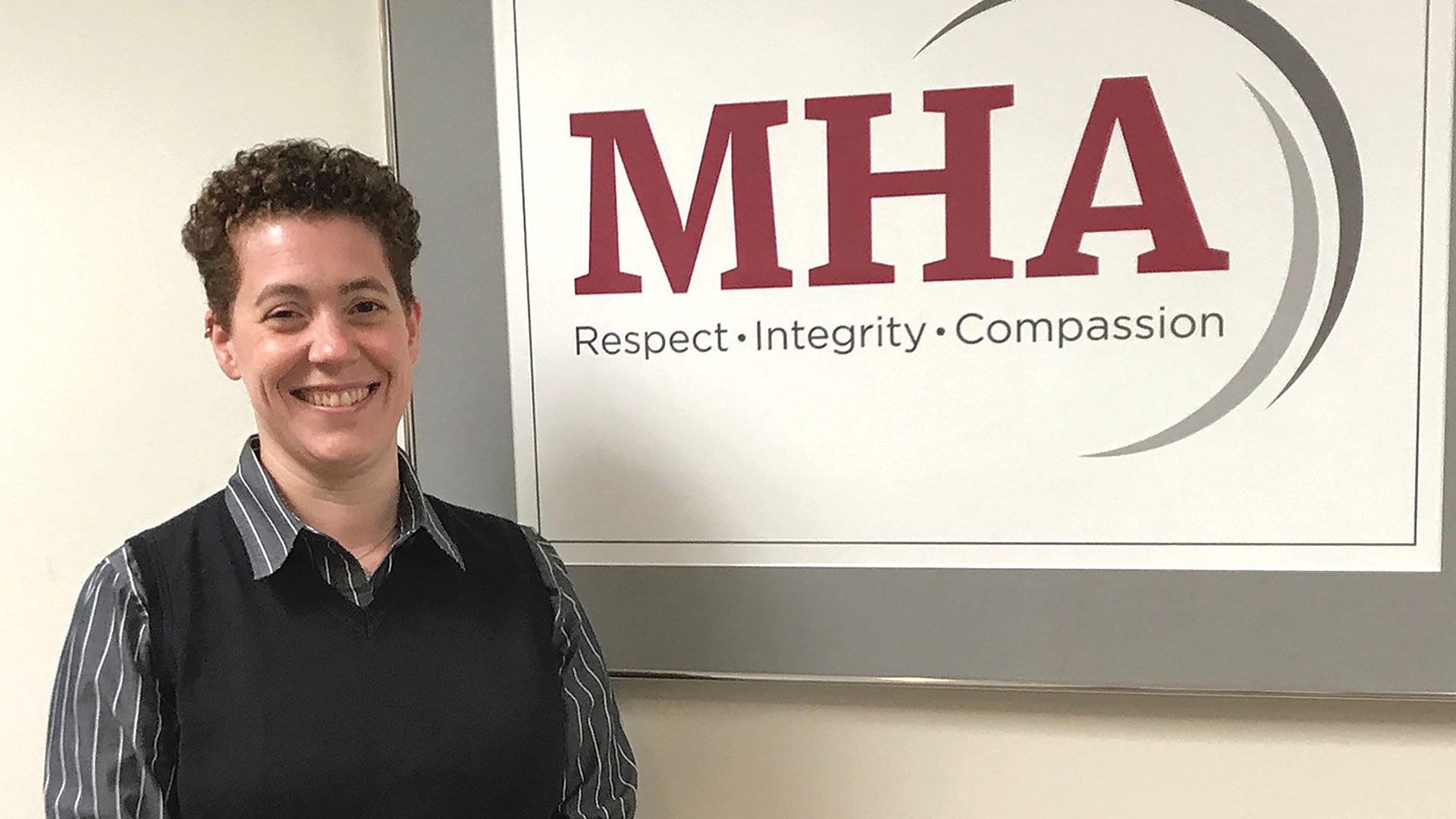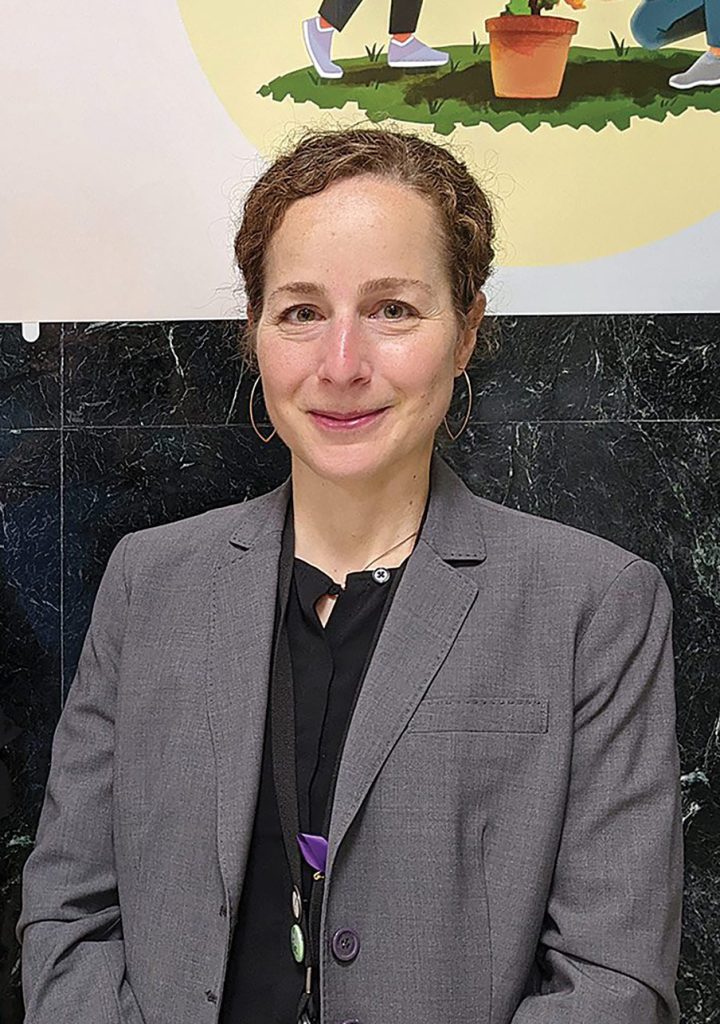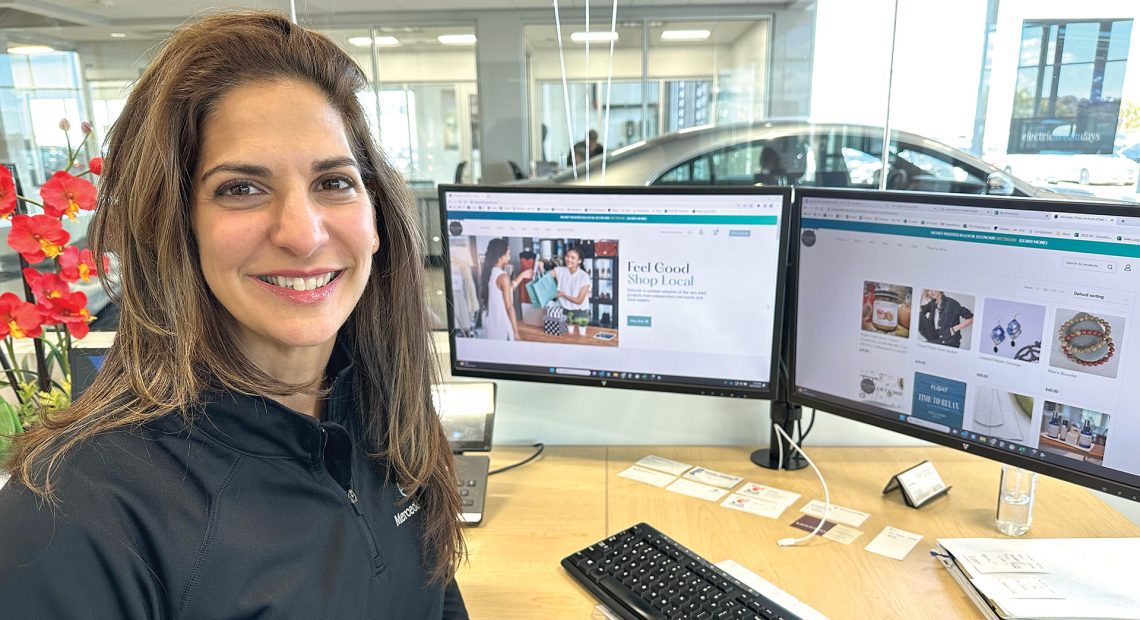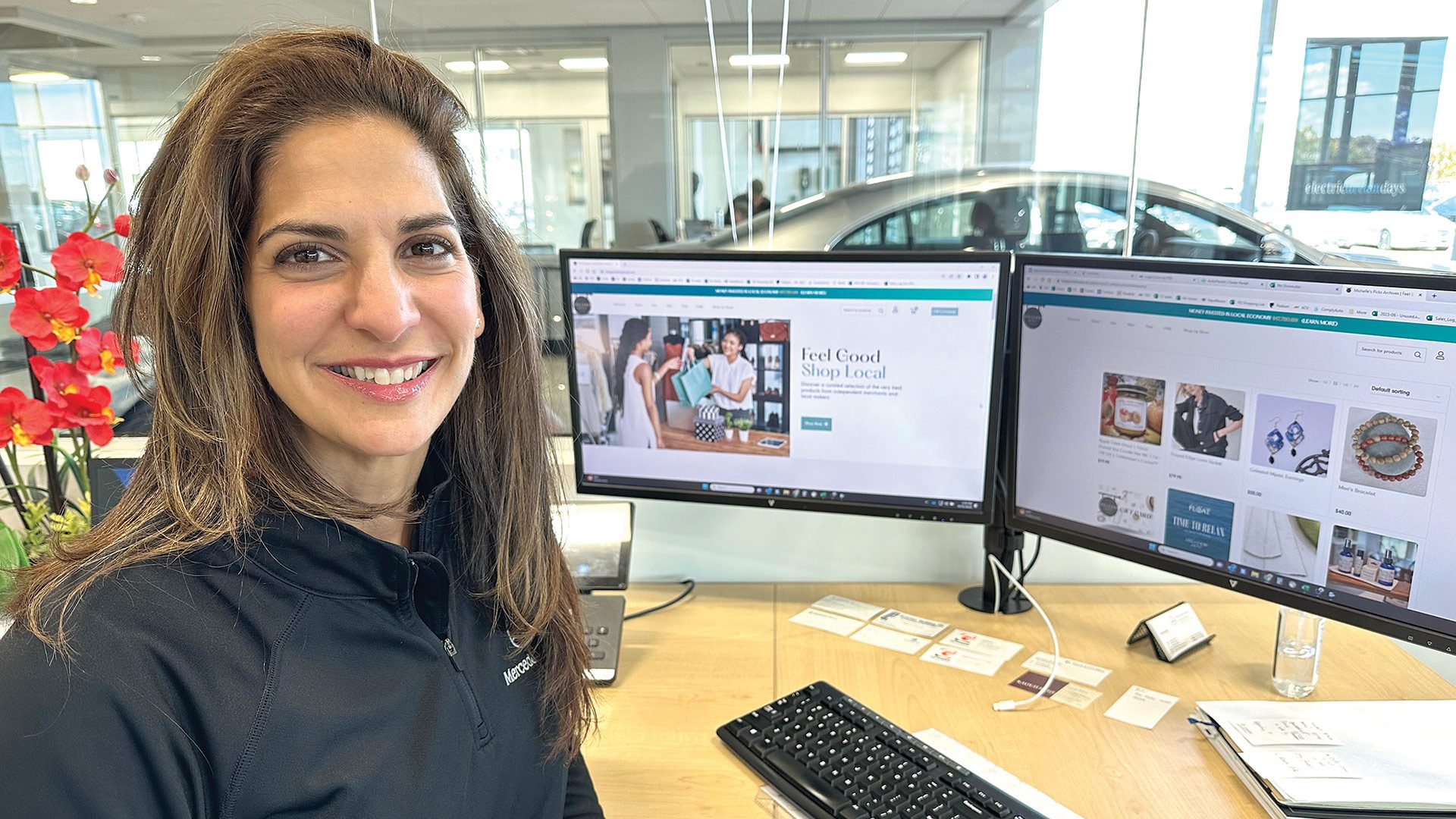The Power of Food
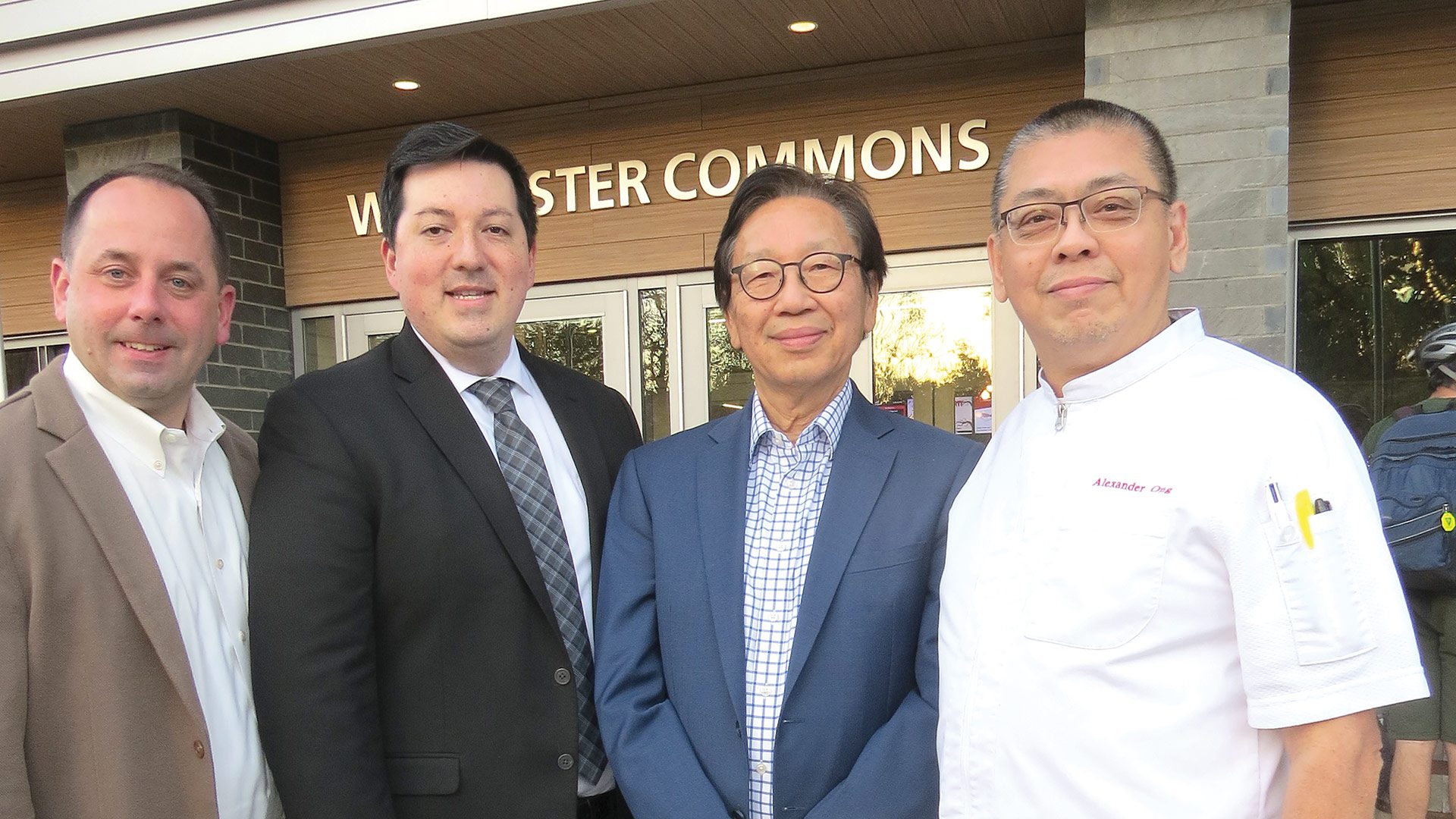
Leaders of the team at UMass Dining, from left, Garett DiStefano, Chris Howland, Ken Toong, and Alex Ong.
Chris Howland says the discussions with the vendor started several weeks ago. And they continued on an almost daily basis right up until the end of last month, covering a variety of issues, from price to delivery strategy.
That’s what it takes to ensure that 15,000 or so lobsters are delivered on time, and are fresh and still kicking, said Howland, director of Procurement, Logistics and Special Projects for Auxiliary Enterprises at UMass Amherst, the parent department for what is now, and has long been, the university’s industry-leading Dining Services.
“It’s quite the process, but we have it down to a science,” he told BusinessWest. “We partner with a vendor in Boston that we source a lot of our seafood from. We’re really comfortable with them and confident that they can supply us with these lobsters in time; they get their final order at 4 a.m., they drive it up here in two tractor trailers, and deliver to all four dining commons by 10. So these are going to be some of the freshest lobsters you’re ever going to see — it’s from the sea to the table, essentially.”
The lobsters are now the centerpiece, but certainly not the only piece, of ‘All Treats, No Tricks’ steak and lobster night, a coveted Halloween tradition at UMass Amherst for nearly 25 years now. It is easily the most anticipated day on campus, food-wise, one that draws not only the students but a few hundred parents, who smartly choose that day for a visit.
There are also, as the name suggests, steaks, Halloween costumes, pumpkin-carving contests, roving magicians, and other entertainment that make this a special night indeed. In fact, when COVID got in the way of things in the fall of 2021, when there only 1,500 students on campus, special arrangements were made for the senior class to enjoy steak and lobster in the spring, so they wouldn’t miss out.
“The days of saying ‘we’re going to serve a banh mi, a Vietnamese sandwich, and put a baguette out there, some mayo, put some ham in there, and call it a banh mi’ … those days are gone; you’ll never get away with it.”
Fittingly, steak and lobster night was the door by which Howland and other leaders at UMass Dining began to answer the question posed by BusinessWest — ‘just how important is food on a college campus, and especially this campus?’
Using two words, because that’s all he needed, Garett DiStefano, director of Dining Services, said simply, “it’s huge.”
Elaborating, he said that, beyond the obvious — sustenance and nutrition — food is a connector; it connects students to family, tradition, holidays, their home countries, and more. Meanwhile, food contributes to performance — not just athletic performance, but mental acuity, he noted, as well as mental health, comfort, and a sense of belonging on a campus with 25,000 students.
Overall, food can greatly impact the student experience — at a time when enrollment is an issue for many schools — thus making it easier to attract and retain students, he went on.
Ken Toong, executive director of Auxiliary Enterprises, agreed.
“Food on a college campus is more important than ever before,” he said, noting that a survey revealed that 70% of the students who chose UMass said food was a factor in their decision, and 83% said food contributed positively to their overall experience at the school.
But — and this is a big but — food can only do all that if it tastes good and it’s authentic (that’s a word you’ll read many times in this article), said Toong, adding that these are just two of the ingredients, and there are many, that go into whether a school’s dining services are considered successful, let alone the top-rated program in the country according to the Princeton Review, which UMass Amherst has been for seven years running now — eight if you count 2021, when the competition was altered somewhat because of COVID.
Other factors include everything from sourcing and buying local to technology, such as an app that not only tells students what’s on the menu, but the ingredients being used (vital information at a time when so many have food allergies); from sustainability and impressively low amounts of food waste\ to globally inspired cuisine — 36% of the students at UMass are international.
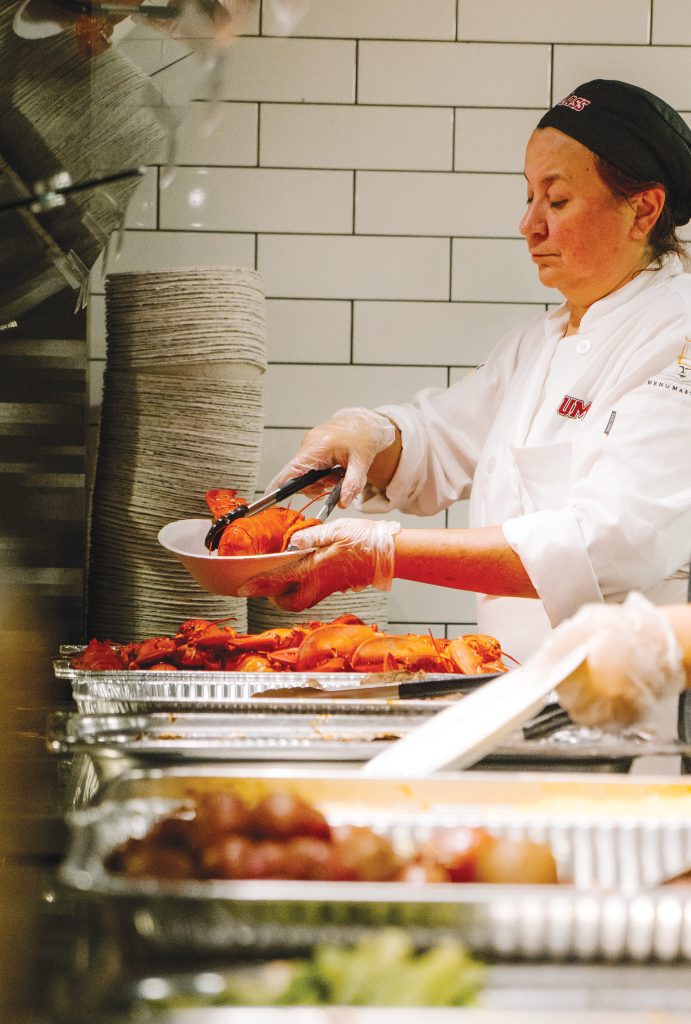
But maybe the biggest ingredient, said DiStefano, is the ability to listen to what the students, who deliver feedback in a candid fashion, are saying, and respond in ways that perpetuate and build upon what he called a “culture of excellence” driven by the large and diverse team at UMass Dining.
For this issue, BusinessWest talked at length with several members of that team, not so much about all the awards they’ve won, although that’s part of it, but what goes into those awards, and how all those ingredients are embedded into the culture of what can only be called an institution on the campus.
On a Roll
When asked for his definition of ‘authentic,’ Alex Ong, director of Culinary Excellence at UMass Dining, broke into a smile, indicating that he enjoys answering that question.
He started by saying the university boasts students from across the country and around the world. When an operation like UMass Dining puts dishes from different regions and different countries on the menu, students from those places know what’s real and what isn’t, Ong explained, adding, with some conviction in his voice, that the team he leads can’t, and won’t, even try to present anything approaching a reasonable facsimile.
“The days of saying ‘we’re going to serve a banh mi, a Vietnamese sandwich, and put a baguette out there, some mayo, put some ham in there, and call it a banh mi’ … those days are gone; you’ll never get away with it,” he said. “If you say it’s a banh mi, it better be a banh mi, starting with the bread — it has to be a Vietnamese-style roll, and it has to be toasted, so when you’re done, all you have on your shirt are tiny little crumbs.”
DiStefano agreed. “We have students from all around the world who know what a real banh mi is or what a particular dish from Northern China should look like and taste like,” he said. “And they’re going to hold us accountable. Chef Alex and his team are very critical and make sure that what you see is what you get and it’s 100% true to form.”
This dedication to authenticity is critically important at a time when more than a third of the students are international and that number continues to edge higher, said DiStefano, noting that the school is seeing more students from Southeast Asia and some of the Latin countries, among other spots on the globe. And they are among the 32 ‘student ambassadors’ that meet with the team at UMass Dining every three weeks to provide feedback and help shape the menus for the weeks and months to come.
These ambassadors, and students in general, can be (and usually are) brutally honest, said Ong, adding that this candid feedback helps drive continuous improvement.
“Sometimes, we walk out of the ambassadors meeting and say, ‘we just got rolled,’” he told BusinessWest. “But we know that we have to pick up the pieces and start rebuilding and stay true to our mission.”
Dedication to authenticity, as well as the ability to listen and respond to the ambassadors and the rest of the student body through a number of feedback channels has enabled UMass Dining to do something difficult — soar to the top of the Princeton Review’s ‘Best Campus Food’ List — and then do something even more difficult: establish seemingly permanent residency there.
In doing so, the school has bested an intriguing mix of public and mostly private schools. Indeed, the top 10 in the 2023 rankings includes an Ivy League school, Cornell; some prestigious private institutions such as Bowdoin and Vanderbilt; and a few other public schools, including Virginia Tech and Kansas State.
There are many other schools that have cracked the top 25 in recent years, said DiStefano, and many of them — as well as institutions that would like to earn such a ranking — have sent delegations, some of them quite large, to UMass Amherst to watch and learn from the team that has set the standard. For example, a large contingency from Williams College recently came for a comprehensive, day-long training exercise.
“The trips are informative, but it’s also about building connections and building relationships, and it’s very important for us to do that. And in many cases, it can humble you — they’re doing a phenomenal job, too, so you want to learn and see how you can do better.”
Meanwhile, the UMass Dining team visits other schools on a fairly regular basis, understanding that to achieve and sustain excellence requires continuous learning and adopting best practices.
“We’ve been to UCLA, Berkeley, Yale, the Ohio State, and many others,” he said. “The trips are informative, but it’s also about building connections and building relationships, and it’s very important for us to do that. And in many cases, it can humble you — they’re doing a phenomenal job, too, so you want to learn and see how you can do better.”
Food for Thought
As he and the others talked about what makes the UMass program successful, and able to stay at the top of the rankings, DiStefano said the biggest ingredients are teamwork and commitment to excellence and the many constituencies fed by UMass Dining, and especially the students.
“You have to serve quality food, authentic food, every day, consistently — it’s as simple as that,” he explained. “The power of the chef is more important than anything, and Chef Alex and the culinary team here are what makes the engine go every single day.
“You have a consistent group of staff here who truly care about the students and the student population,” he went on. “You have a reflexive staff who are some of the diverse group of people we have — we have 23 different languages that are spoken in our dining commons, and 60% of our staff are first-generation residents, so they bring a wonderful flair of authenticity and passion for the university as well as the food they serve, and that reflects our culture.”
Ong agreed. “We empower our staff to tell a story through food because they represent the United Nations of different ethnicities that we serve; they bring a lot of authentic flavors and share them with our students.”
But, as noted earlier, there are many factors that play into a successful program beyond delicious, authentic food, said Toong, listing everything from efforts to reduce waste to initiatives to buy local whenever possible, to efforts to utilize technology and research to further enhance the student experience — and even academic performance.
He said the program uses cell-phone communication and dining apps to not only tell the UMass Dining story, but also gather information from students. There are also ordering kiosks to help shorten the lines in the dining commons, as well as collaborative efforts with the School of Nutrition on studies to determine how diet and academic performance might be related.
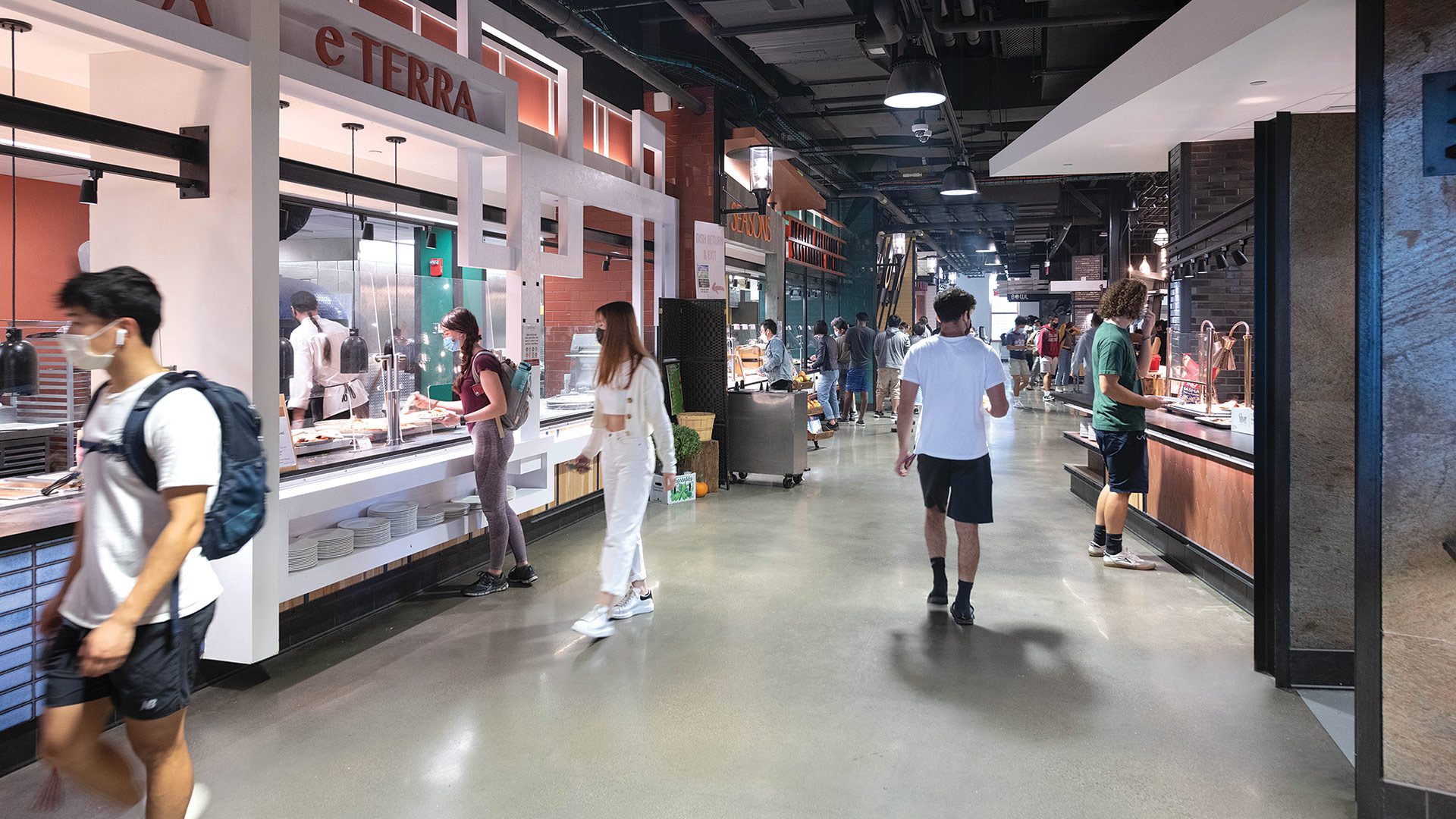
Students find plenty of healthy, authentic choices at the Worcester Commons, one of four dining commons on the UMass Amherst campus.
(Photo by Chuck Choi Photography)
“We’re looking at things like what foods might help someone perform better before a test or feel less anxious,” said DiStefano, adding that the department doesn’t simply measure such things — it also incorporates what is found into the dietary plan.
“And that’s where the power of the chef comes into play,” he said. “I can say, ‘eating more beans is going to be great for you,’ but it must taste good for the student to actually want to do it. That’s where the magic happens, and that’s where we start to really see change in diet behavior.”
With that, he referenced the vegetarian/vegan area in the Worcester Dining Commons. “I eat there pretty much every day, not because I’m a vegetarian or a vegan, but because the flavors are really good; there’s something about spinach cooked perfectly.”
Meanwhile, UMass Dining supports a number of local farms and orchards, including the UMass Student Farm, a 20-acre, certified, organic vegetable farm in nearby Sunderland that grows a variety of crops, including tomatoes, cucumbers, kale, broccoli, lettuce, and more.
“It’s a great program, they’re doing very well, and we certainly like to support them because it’s a quality product,” DiStefano said. “And it will help sustain the program for the future years.”
As for food waste, UMass Dining has a 6% rate of waste, while the average restaurant might have a 16% rate and a grocery store 35%.
Beyond the food, the technology, and the research, though, UMass Dining has put the accent on tradition, said those we spoke with. And steak and lobster night is just one of many.
Indeed, UMass Dining has put together programs for Vietnamese students, a special meal during Ramadan at 3 a.m. that drew more than 300 students, a traditional seder during Passover, and a program for Lunar New Year.
“For Lunar New Year, you may not be able to be with your family, but you can still celebrate it,” DiStefano said. “The same with Diwali [the Hindu festival of lights]; students here can get dressed up in traditional garb and celebrate Diwali with their friends here at UMass. These are just more examples of the incredible importance of food; we’re creating these experiences and building a community.”
Tall Tails
Getting back to steak and lobster night, Howland said that seafood vendor in Boston was probably getting tired of hearing from him as Halloween neared.
But there was far too much at stake (and steak) to leave any detail to chance for this all-important tradition.
Indeed, as he monitored social media in the days leading up to the big night, he grasped the importance of the event to not only students, but many of their parents as well.
“Our parents of students have their own Facebook group, and every parent was talking about the steak and lobster dinner,” he recalled, noting that he didn’t really need any reminders.
Such is the power of food on this college campus — and the growing legend of UMass Dining.



